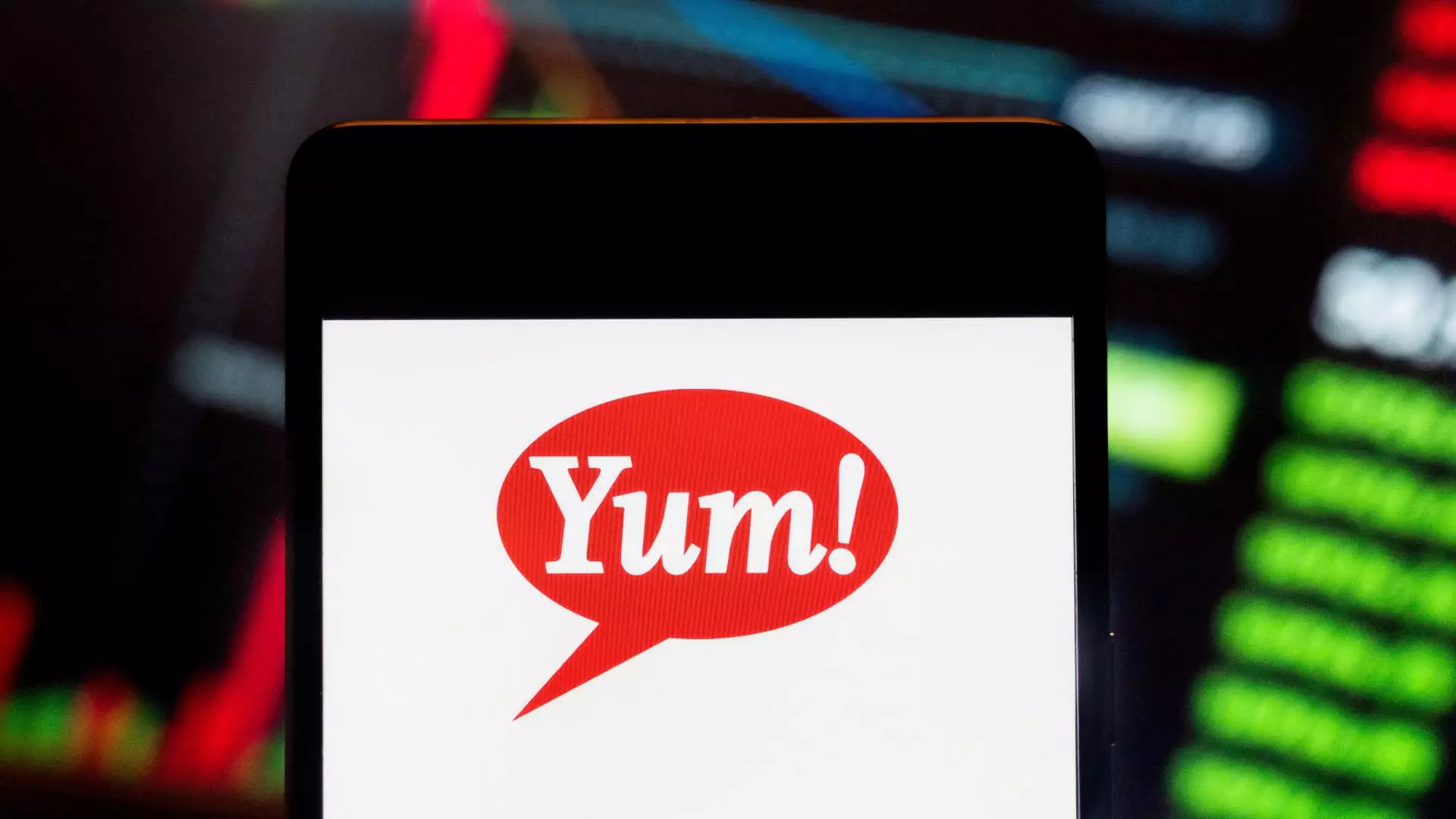Yum Brands, the parent company of popular fast-food chains like KFC, Pizza Hut, and Taco Bell, recently released its quarterly earnings report, revealing a disappointing performance that has raised concerns among investors and industry analysts alike. The company not only fell short of Wall Street expectations but also highlighted significant challenges within its core brands due to a complex global operating environment.
In its most recent quarter, Yum Brands reported earnings per share (EPS) of $1.37, slightly below the anticipated $1.41. When looking at revenue, the figures proved even less favorable, with the company generating $1.83 billion compared to expectations of $1.90 billion. The net income stood at $382 million, down from $416 million a year earlier—a stark demonstration of the pressures facing the fast-food giant.
Despite reporting a 7% increase in net sales, the decline in same-store sales proved troubling. Specifically, Yum’s worldwide same-store sales fell by 2%, heavily impacted by underperforming segments like KFC and Pizza Hut. These brands faced dips of 4% in same-store sales, a clear indication of shifting consumer preferences and heightened competition.
CEO David Gibbs addressed the varying sales performances across regions during a conference call, attributing the results partly to political instability and fluctuating consumer sentiment in several markets. Particularly, the continued conflict in the Middle East and other geopolitical tensions have impacted the company’s sales, with KFC experiencing a staggering 45% drop in same-store sales in specific regions.
KFC’s challenges are further illustrated in the U.S. market, where it has lost market share to rivals such as Popeyes. Over recent years, Popeyes has overtaken KFC to become the second-largest chicken chain in the country, which places significant pressure on KFC to adapt its strategy moving forward.
In response to declining sales, KFC has announced a renewed focus on providing value to consumers, particularly as it heads into the fourth quarter. This strategic shift will be crucial for the brand to regain traction and reclaim its stance in a competitive market. While KFC struggles, Pizza Hut has not fared much better, experiencing a 6% decline in international same-store sales, although its U.S. sales were relatively stable, slipping by merely 1%.
In an effort to combat competition, Pizza Hut is concentrating on discounting strategies in key markets, including China, India, and parts of the Middle East. These price reductions aim to draw consumers into stores and increase foot traffic, but they may also indicate a need for a broader revitalization of the brand’s value proposition.
On a more positive note, Taco Bell emerged as a strong performer for Yum. The chain reported a notable 4% increase in same-store sales, buoyed by the introduction of new menu items like the Cheesy Street Chalupas and consumer-friendly value meals. Taco Bell’s success in cultivating a perception of value among fast-food consumers showcases its potential to thrive even amidst an industry slowdown, contributing significantly to Yum’s overall performance in this challenging climate.
Yum Brands faces an uphill battle as it navigates a difficult and ever-evolving landscape. The company’s latest earnings report is a stark reminder of the volatility within the fast-food sector, where shifting consumer behaviors and regional disparities influence sales outcomes dramatically. As each brand under the Yum umbrella recalibrates its business strategy, the focus on value, competitive positioning, and market responsiveness will be critical. Moving forward, investors and stakeholders will be watching closely to see how Yum adapts to these challenges and whether it can reclaim growth momentum in a demanding economic environment.

